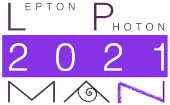Speaker
Description
Several possible extensions to the Standard Model (SM) predict the existence of a dark sector that is weakly coupled to the visible one. A widely studied case is one in which the two sectors couple via the vector portal, where a dark photon with a non-negligible lifetime and a mass in the MeV to GeV range mixes kinetically with the SM photon. If the dark photon is the lightest state in the dark sector, it will decay to SM particles, mainly to leptons and light quarks. At the LHC, dark photons would typically be produced with large boost, due to their small mass, resulting in collimated jet-like structures containing pairs of leptons and/or light hadrons (dark photon jets, DPJs). Studies are presented for dark photons from Higgs decays, where gluon-gluon Fusion (ggF) and Higgs production in association with a W boson (WH) are considered. Results obtained are interpreted in the context of complex models involving various number of dark particles as described by the Falkowski–Ruderman–Volansky–Zupan (FRVZ) model.




